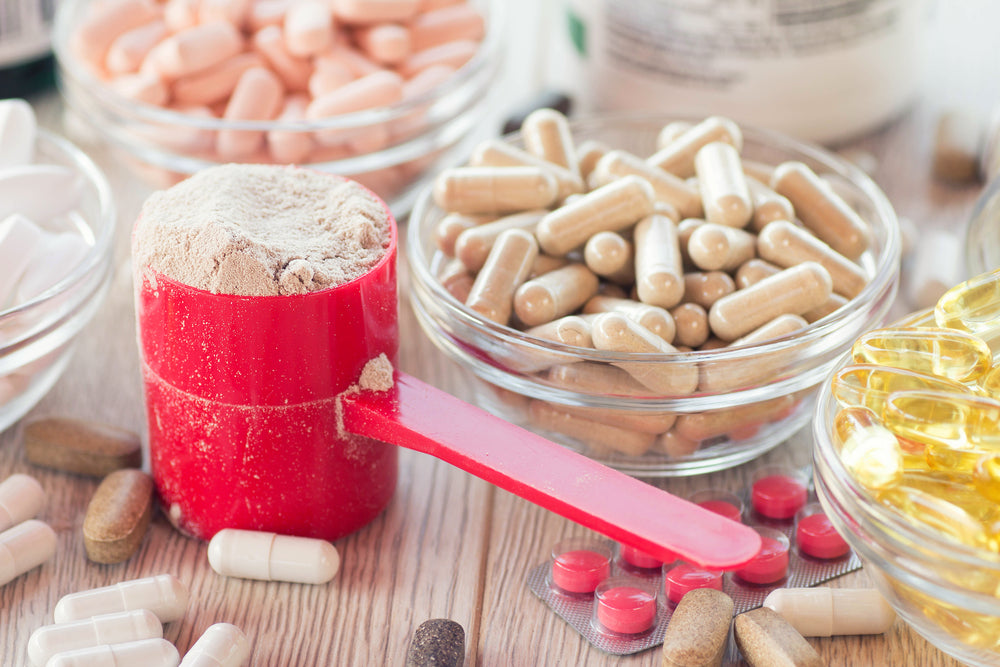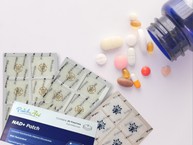Taking vitamins is something that you can do to support your health,* but are you getting the most that you can out of your vitamins and other supplements? It is natural to put a lot of focus into which vitamins and supplements to take on a daily basis, but there may be more to the story. Some nutrients have enhanced properties when taken together, while others can reduce each other’s effectiveness.
These are some pairings to consider. Some may complement each other, while others are best avoided. You will also see a variety of PatchAid Patches to choose to get - or to avoid - various combinations.* As always, ask your doctor to help you decide which supplements to take and how best to take them.
The Idea Behind Vitamins Pairings to Choose or Avoid
Why does it matter which nutrients you take together or not? Some of them improve absorption when you take them together. Others compete for absorption and lead to lower levels of one or both. Some need the other to be in adequate amounts for your body to use both of them properly. Others are not stored well if there is too much of the other. These are some examples of nutrients that affect each other positively or negatively.
Vitamins That Complement Each Other
Take a look at these pairings so you can maximize the benefits when taking these vitamins and minerals.
Calcium and Vitamin D
Calcium and vitamin D go hand in hand. Vitamin D not only helps your body absorb calcium, but also helps your body regulate the use of calcium. Calcium may be a mineral that is part of strong bones, but a vitamin D deficiency can also lead to trouble with bone health. Vitamin D is such a good friend to calcium that in the U.S., fortified milk, which is naturally rich in calcium, contains vitamin D.
The two main patches by PatchAid that contain calcium also contain vitamin D. These are the Vitamin D3/Calcium Patch and the Vitamin D3 with K2 Vitamin Patch. They are easy ways to get both of these nutrients.*
Vitamin D and Omega-3’s
Vitamin D is also a friend to a group of healthy fats known as omega-3’s. They both support heart, bone, brain, and joint health.* Vitamin D is a fat-soluble vitamin, and absorption of it increases when you take it with a source of fat.
Though vitamin D is not in many foods naturally, it is in fatty fish. So are omega-3 fats. But if you are among the majority of Americans who are not getting enough of one or both of these nutrients, you might ask your healthcare provider about a supplement with both of them. The Anti-Aging Topical Patch includes both vitamin D and omega-3’s.
Vitamin E and Omega-3’s
Like vitamin D, vitamin E is also fat-soluble. Absorption of dietary vitamin E increases with consumption of fat. That includes omega-3 fats, which are in fatty fish, walnuts, and flaxseed, for example. Vitamin E is an antioxidant, and both omega-3’s and vitamin E may be healthy for lipid levels.* The Anti-Aging Vitamin Patch by PatchAid has both of these nutrients.
Magnesium and Vitamin D
Speaking of bone health, vitamin D also acts synergistically with magnesium. Magnesium is another mineral that is essential for bone health. It also supports normal energy production, as well as muscle function, mood, and relaxation. Magnesium is commonly deficient. You can get both nutrients from the PatchAid Vitamin D3 and Calcium Patch, as well as the Vitamin D3 and K2 Patch.
Iron and Vitamin C
Iron deficiency is the most common mineral deficiency worldwide, and is widespread in the U.S. If you are deficient, it makes sense to increase your consumption, if your healthcare provider recommends it, and also to do what you can to maximize absorption. That can mean taking vitamin C at the same time as you take in your iron.
These are some examples of food pairings with iron and vitamin C.
- Spinach salad with strawberries and chickpeas
- Spaghetti fortified with iron, topped with tomato sauce
- Peanut butter sandwich with sliced strawberries
- Fortified cold cereal or oatmeal with peaches or mango
You may also benefit from knowing that heme iron, which is one of the forms of iron found in animal-based foods, is not dependent on vitamin C or other dietary factors for absorption. Liver and other organ meats, red meat, fish, chicken, and egg yolks are examples of sources of heme iron. Plant-based sources of iron, such as spinach, lentils, beans, and potatoes, only have non-heme iron, whose absorption is enhanced by the presence of vitamin C.
The Iron Plus Patch and the Simply Iron Patch by PatchAid both have iron and vitamin C. A benefit is that with transdermal absorption, you are less likely to have constipation than with an oral iron supplement.* Too much iron can be problematic, so have your healthcare provider monitor your levels.
Vitamin Pairs to Avoid
While some vitamins or minerals may help each other when you take them together, others may do the opposite. They may compete for absorption during digestion, or they may disrupt your body’s balance of these nutrients. These are some pairs to try to avoid.
Iron and Calcium
Iron and calcium may be among the best-known pairs of minerals to avoid taking together. On the surface, they do not seem to compete, since their roles in the body are different. Calcium is in bones and is involved in muscle and nerve function, while iron is in red blood cells and various pathways for energy production. However, they compete for absorption because they use the same transporters in your digestive system, and taking these two minerals together in oral supplements can lead to lower absorption.
Most multivitamins are low in calcium or devoid of it, and most healthcare providers suggest taking your calcium supplement separately from an iron supplement. With a transdermal patch, such as by PatchAid, you do not need to worry about iron competing with calcium for absorption. The PatchAid Multivitamin Plus Patch with Iron has both calcium and iron.
Magnesium and Zinc
Taking magnesium and zinc seems like a good idea for many people, since both of these minerals are often low. However, taking them together can be less effective.* If you are taking zinc to reduce symptoms of a cold, for example, the effects may be lessened if you are also taking high amounts of magnesium. And, high levels of one of these in your body may lead to lower levels of the other.
Vitamin E and Vitamin K
Both of these vitamins are fat-soluble. That means high amounts can be stored in your body. However, too much of one can impair levels of the other. It is best to ask your healthcare provider about optimal amounts to take.
*The Food and Drug Administration has not evaluated these statements. PatchAid patches are not intended to diagnose, treat, cure or prevent any disease. Anyone with a medical condition should seek the advice of a licensed medical practitioner. Individual results may vary.







